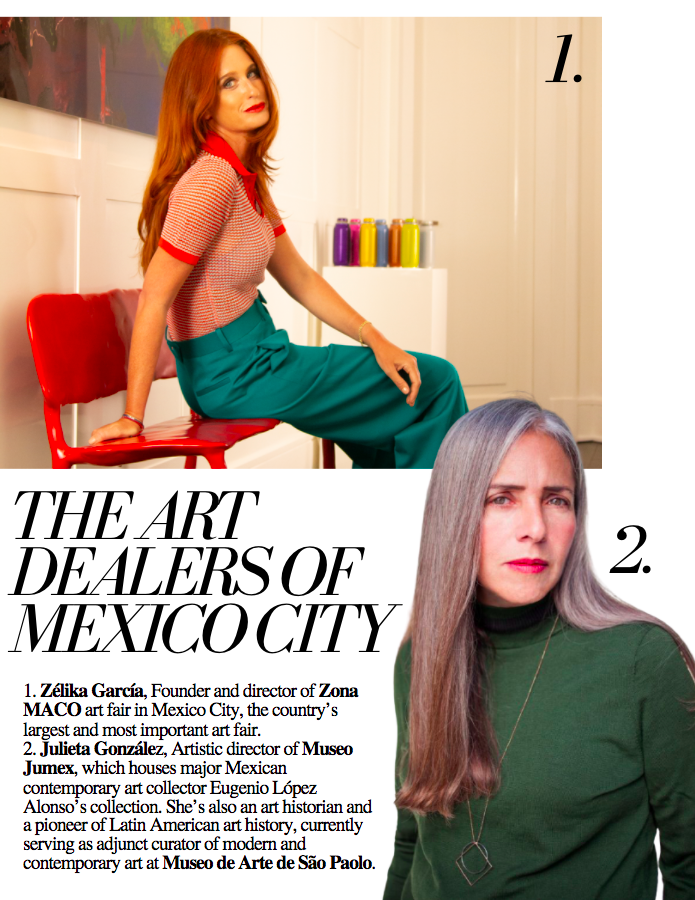Mexico City Art Guide

Mexico City is a loud, chaotic, tumultuous place. However, it is as colorful as it is deafening, with birds chanting, street bands playing, fruit and quesadilla stands amplified via megaphone. It is as radiant as it is deteriorating. Fallen buildings next to vibrant murals and architectural dreamscapes. An organized mess of a city.
The poet Pablo Neruda once described Mexico City as ‘the touchstone of America’. That was in the mid 20th century, yet any visitor to the Mexican capital today will find his words still ring true.
Mexico City is home to a vibrant art scene. Some call the art scene growing or booming. However, the truth is that art has thrived there for a century — from the great muralists like Diego Rivera in the 1920s; via the abstract painters of the Ruptura movement in the 1950s; and the conceptually-inclined ‘Friday Workshop’ artists in the 1990s; through to today.
What has changed in the past two decades is the artistic infrastructure. A rich gallery sector and fairs such as Zona Maco have emerged, thanks to a fast-growing collector base. But the artists and artisans have been there long before.
And debuting in 2013 was the contemporary art-focused Museo Jumex, which was established in part by Mexican juice magnate Eugenio Lopez Alonso. Lopez is also a board member of the Museum of Contemporary Art Los Angeles, marking one of the ongoing connection points between Mexico City and L.A.
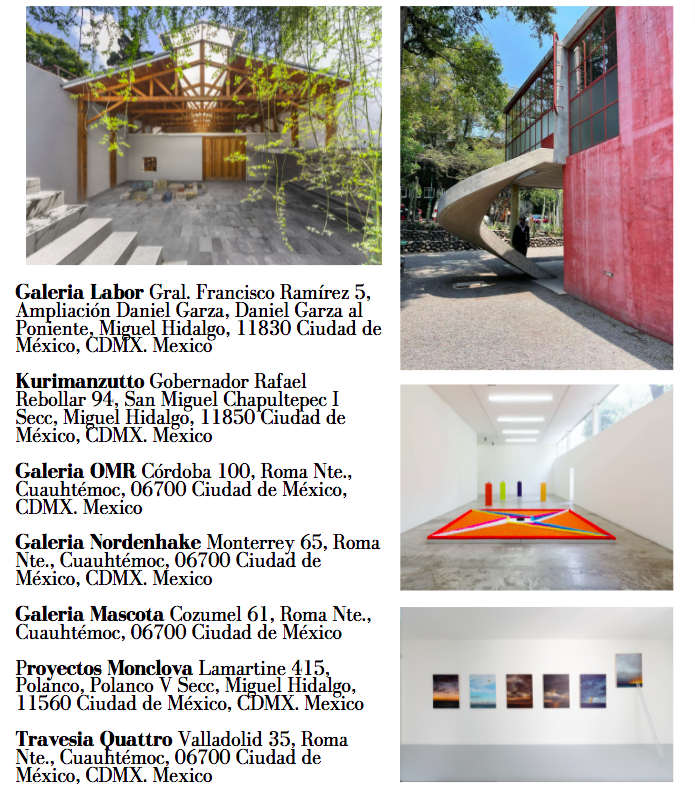
Mexico City is a hotbed of creative minds, galleries and architectural spaces. Faced with the unknown the past two years has brought us, the city’s art scene has shown us great examples of a collaborative spirit. From initiatives such as Casa Versalles; where 10 local galleries come together to create a fair in a 20th Century house to kurimanzutto opening up its space for younger galleries and artists to provide them a larger platform. In addition, it’s been wonderful to see how our local collectors kept supporting these initiatives throughout this period, a huge part of why it’s thriving.
—Karen-Sofie Kvamme, Kurimazutto

Our very first suggestion: Take yourself on a stroll through the streets. Keep your eyes and ears open as they will be met with the most wondrous of surprises. Follow your nose and it will often lead you to a delicious spot with both food and art. You might pass an open garage which turns out to be a piano restoration or a neoclassical building nostalgically crumbling. Some people’s initial response to walking around in Mexico City is fear, however walking in Roma, Condesa and Polanco requires only an attentive mind and conscious step.
Make sure you visit some of Mexico City’s leading galleries. Usually exhibiting both international and Latin artists, you will be met with a refreshing mix of both emerging and established artists usually set in unconventional gallery spaces with attentive staff, eager to show you around.




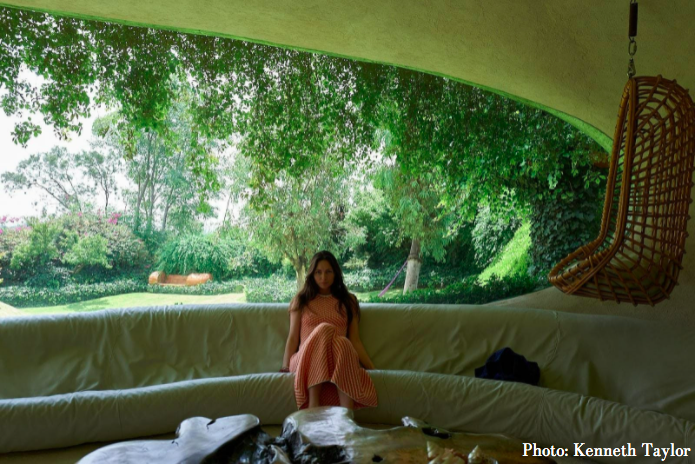
Our next suggestion: Make an appointment and visit the dreamy Casa Organica. Built by Mexican architect Javier Senosiain known for his organic architecture. Senosiain’s Casa Organica was built in 1985 and the architect lived there with his family until recently when he opened it up for public visitors. The embryonic idea of the project was inspired by a peanut shell. It includes two wide oval spaces, with lots of light that are joined by a narrow dim space. The two spaces are supposed to symbolize daytime and nighttime.
When you walk into the house it feels as if you are walking into the earth. It is built on the idea that we were designed and created in our mother’s womb and that the spaces we inhabit should mirror nature, rather than our square built architectural homes. The space does not fail to integrate the exterior gardens. The interior is almost invisible as it is constructed as a green dune. Walking in the garden means walking on the roof, without even noticing it.
Senosiain’s book Bioarquitectura (Bio-architecture) concentrates on the search of humans in a natural space. To Senosiain, nature and ecology has inspired form and spatial sensibilities. Bio-architecture studies the origin principles of animals and humans based on biological visions. It is an architecture that separates itself from geometrical lines and pure volume. Bio-architecture also shows how architects can take advantage of the resources that modern technology has put at their disposal to solve unusual forms that are difficult to execute according to traditional techniques.

3 Women Artists Ruling Mexico City
While Frida Kahlo remains a household name in our hearts of women artists who paved the way, Mexico City is continuously delivering.

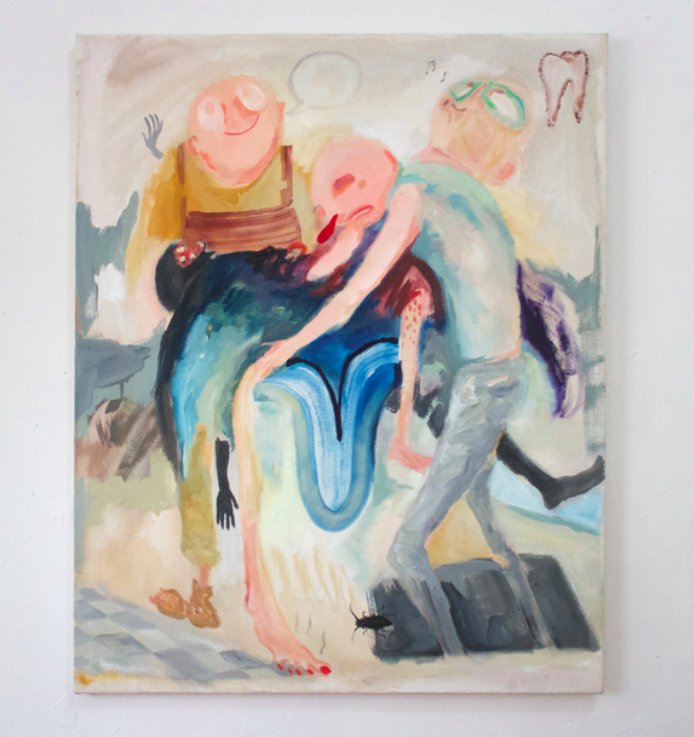
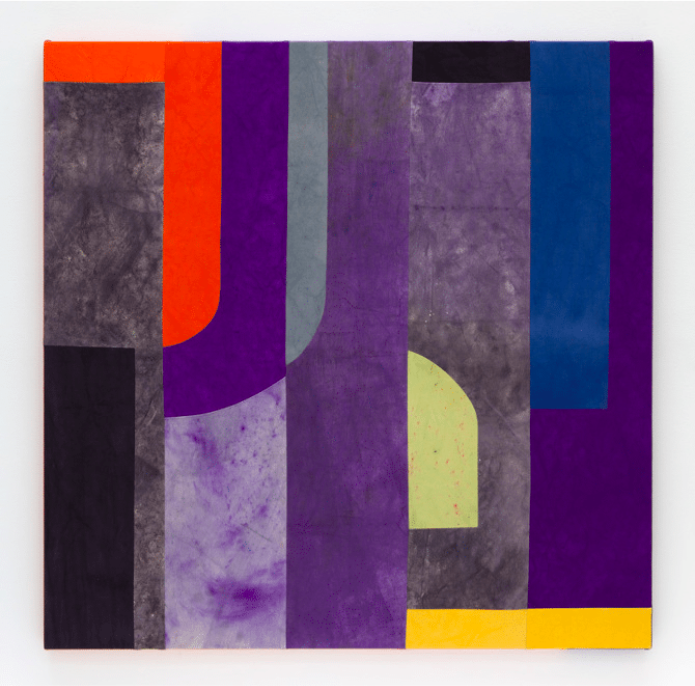
The Art Dealers of Mexico City
